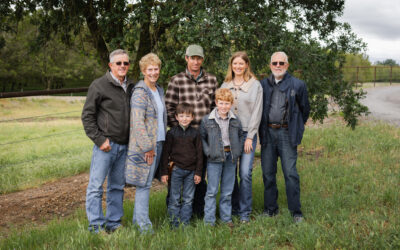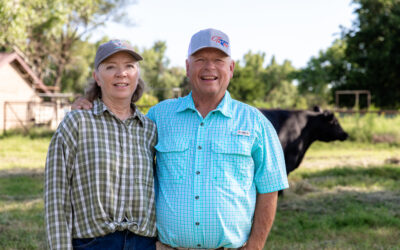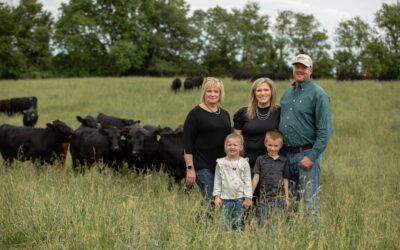
Predictable cattle in a business that’s anything but
In a world where changes seems hard to predict, where prices are volatile and weather is, too, it’s nice to have something constant to rely on.
That’s what Nebraska cattle feeder Terry Beller has in Montana rancher John Riley.

“The cattle, they’re real predictable. I know how they’ll gain. I know how they’ll grade, and he’s got enough stretch in them so that if I have to play the market card for a few weeks or even a month and fight it just a little bit, his cattle will continue to grow and grade,” says the Lindsay, Neb., producer.
Spring-born calves are weaned in November and then backgrounded on the Riley Ranch, a partnership between John’s family and his brother Mike’s.
“We’re feeding them in the 70- to 80-day range—it kind of takes the bawl out of them,” John says. The key to perfecting that growing phase? “Time. You know, we had to learn how to feed those kind of cattle.”
Dried distillers grains (DDGs) helped, too, bringing up the protein levels with a cost competitive and palatable feedstuff.
As I visited John on one of those perfect spring days, I thought everything about him and his cattle seemed solid. Then my chat with Terry earlier this week confirmed it.
“They get in my yard and it’s just a quick transition onto feed and away they go,” Terry says. “They don’t look back.”

Many years Riley will source sires from the Midland Bull Test, always studying numbers like the American Angus Association’s beef value index ($B), and EPDs for docility, growth and marbling. He’s looking for improvement and balance.
“All the genetic testing and stuff…..to me, you’re somewhat obligated to yourself to explore it. That’s good, solid information that you probably should be using if it’s there to use,” he says.
If his dad were around to see it, John says he would be mystified by the volume of data available and used today, but he might well be proud of the relationship the ranch has built with its customer.

For close to two decades now, at the end of January, Terry comes up to Volborg, Mont., to take delivery of the Riley calves. Trust runs deep, so there’s no need to be on-site, but the Bellers wouldn’t miss it.
“It’s gotten to be a family getaway almost,” Terry says. “Our families have become close.”
They’ll keep up on milestone events, and say an extra prayer for each other when one’s needed. Then when it’s time to get down to business, they settle on a fair price.
“Over all the years, he calls me first,” Beller says. “I know when his cattle are coming. I plan on him and he plans on me.”
Steady.
“What price can you put on relationships like that?” Terry asks, and then answers, “You can’t.”
May your bottom line be filled with black ink,
Miranda
PS–Watch the Angus Journal later this year to see the rest of the Riley story.
You may also like
Legacy in the Golden Land
On a quiet stretch of Northern California rangeland, a different story unfolds. The Borror family’s legacy modestly speaks through the cattle they raise, the ground they steward. The generations who’ve made a life here demonstrate commitment to doing things right, even when no one is watching.
Helping Hands, Helping Herds
“When I die, I want to come back as one of your cows,” murmurs a friend to Steve Zybach. Full to the brim from an alfalfa ration every day, bountiful fields of lovegrass stretched out across the Texas Panhandle—and owners who leave no ounce of cattle care up for question. The Zybachs’ motivation for this level of dedication to their Angus cattle is simply love.
An Ambassador for All
Joanie, with daughter Lindsey and her husband, Adam Hall, raise registered Angus cattle with two primary goals: producing high-quality seedstock that perform well in a wide variety of environments and ensuring end-user satisfaction. Those goals tie everything together, from promoting Angus to other producers to sharing their story with CAB partners and beef consumers.



